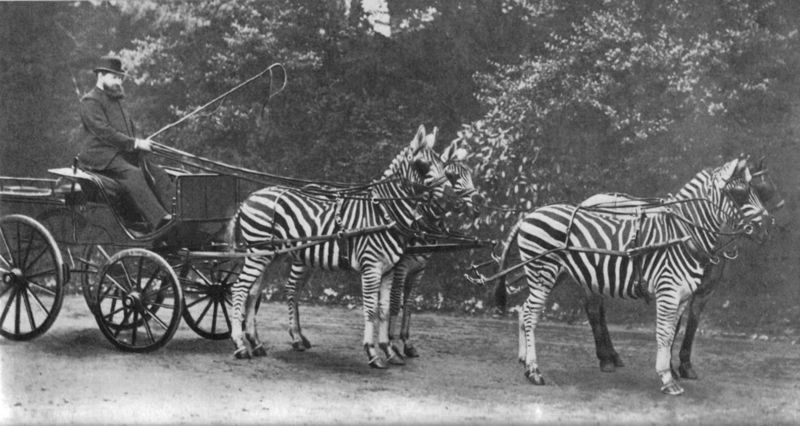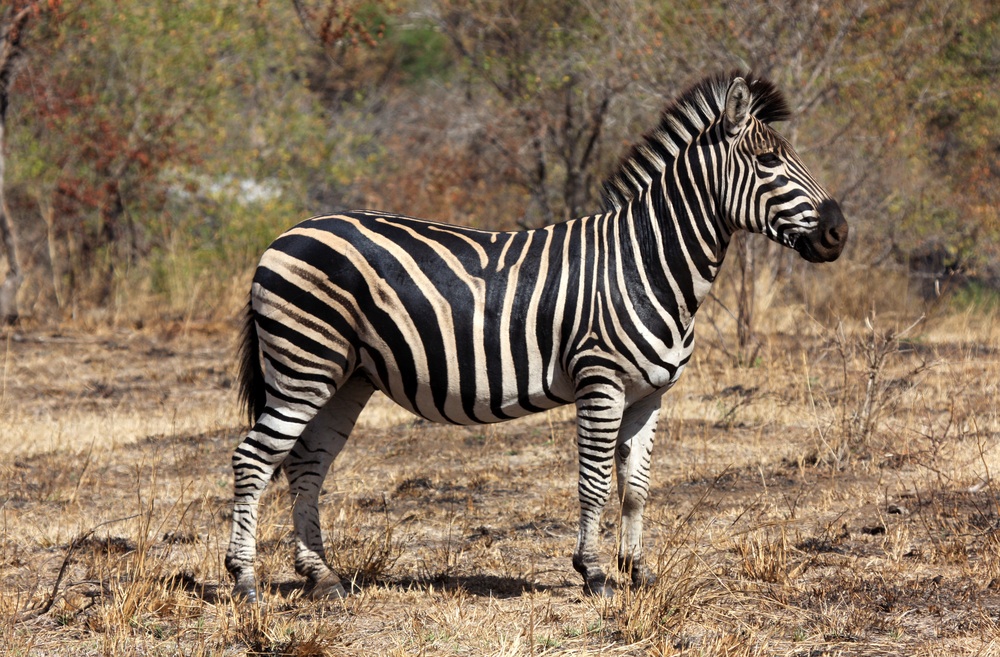Strange rides

One of the most unusual and talked-about means of transportation on the streets of Victorian London was a cart pulled by four Burchell's zebras (Equus quagga burchelli). This was driven by the Hon. Walter Rothschild (1868-1937), the animal-mad son of the first Lord Rothschild and heir to the family banking fortune. Fascinated by the natural world, Walter also set up a zoological museum at Tring in Hertfordshire, which is now part of the UK's Natural History Museum.
Yet this was not the first or indeed the only documented case of zebras being used in this way. As governor of Cape Colony in South Africa between 1854 and 1861, Sir George Gray frequently travelled in a coach pulled by zebras. He then arranged for them to be sent to New Zealand so he could continue being transported in this way on Kawau Island, his private residence, when he was appointed governor there.
Riding zebras
Various attempts have also been made to domesticate zebras for riding purposes in Africa, partly because they display far greater resistance to various native diseases than horses themselves. In Kenya for instance, a doctor called Rosendo Ribeiro became well-known for carrying out his visits on one of these rather unpredictable equids. They tend to panic at any hint of danger and then try to run off, which makes them hard to control.

Not everyone felt the zebra was a hopeless cause for riding purposes though. Writing in the 1890s, Captain Horace Hayes compared the merits of the various types of zebra. He recommended Burchell's zebra, but proved that mountain zebras (E. zebra) could also be broken easily, doing so in just two days. To emphasise the point, his wife then rode this particular zebra. Even the quagga (E. q. quagga) - a distinctive race of zebra from South Africa which had no stripes over the rear of its body - could be both ridden and used to pull carts, according to Hayes.